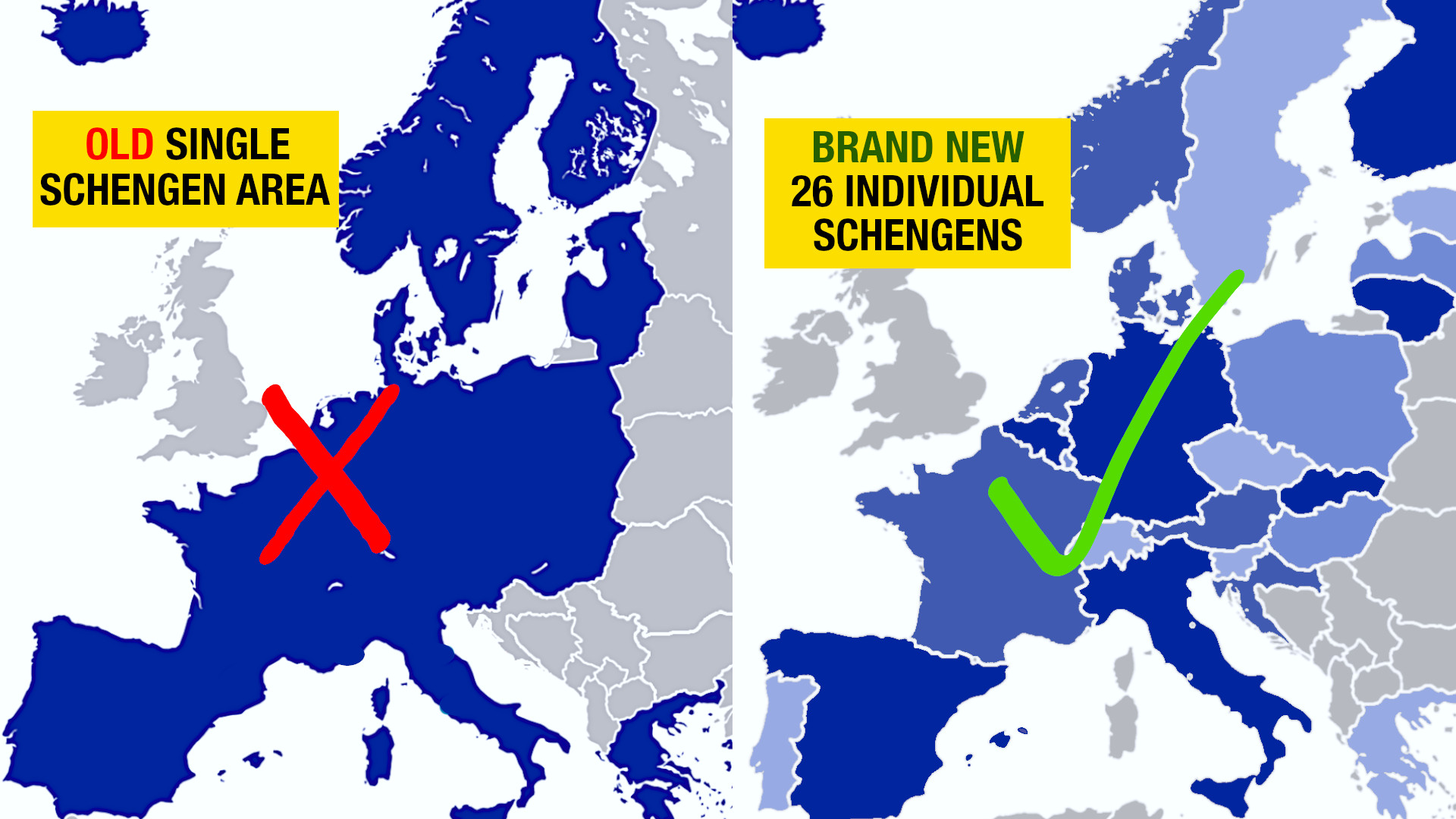 BRUSSELS — Admitting that it’s no longer accurate to describe the 26-country area as a free-movement zone, European leaders have decided to carefully divide the Schengen area into 26 individual Schengen areas.
BRUSSELS — Admitting that it’s no longer accurate to describe the 26-country area as a free-movement zone, European leaders have decided to carefully divide the Schengen area into 26 individual Schengen areas.
European Commission president Ursula von der Leyen says that following a Zoom chat with national leaders, everyone agreed that it’s silly to go on pretending that new internal border controls aren’t being set up every other week.
However, von der Leyen insists that the Schengen area, which was first created on paper in 1985, will continue existing – it’s just that there will be plenty more of them, and people might need some kind of document to go from one to the other.
“Think of it this way: the big, beautiful Schengen is pregnant, and it’s going to have a bunch of baby Schengens,” she said. “A big, robust baby Schengen just for Germany, and a cool, slender baby Schengen for Italy.”
“And for Denmark,” she added, “a baby Schengen area that looks like a turtle standing up and waving at an airplane.”
Many EU citizens are applauding the move, saying it makes sense for member states to have their own individual, self-contained free-movement zone.
“Take Iceland, for instance,” said Reykjavik shopkeeper Guðmann Jónasson. “We don’t even have borders. We’ve been doing the Schengen thing since we landed here in the 800s.”
“And we’re practically in Canada,” he added. “I can’t imagine whose idea it was anyway to drop us inside Europe.”
Other EU citizens say they’re looking forward to being able to visit and hold new little Schengen zones.
“How adorable that will be, an individual baby Schengen area for small Slovenia, and one for tiny Luxembourg,” said Clémence Perrot, who lives in Paris. “Oh, they’ll be so cute.”
“And an itsy bitsy Schengen area for Lichtenstein,” she added. “How precious.”
